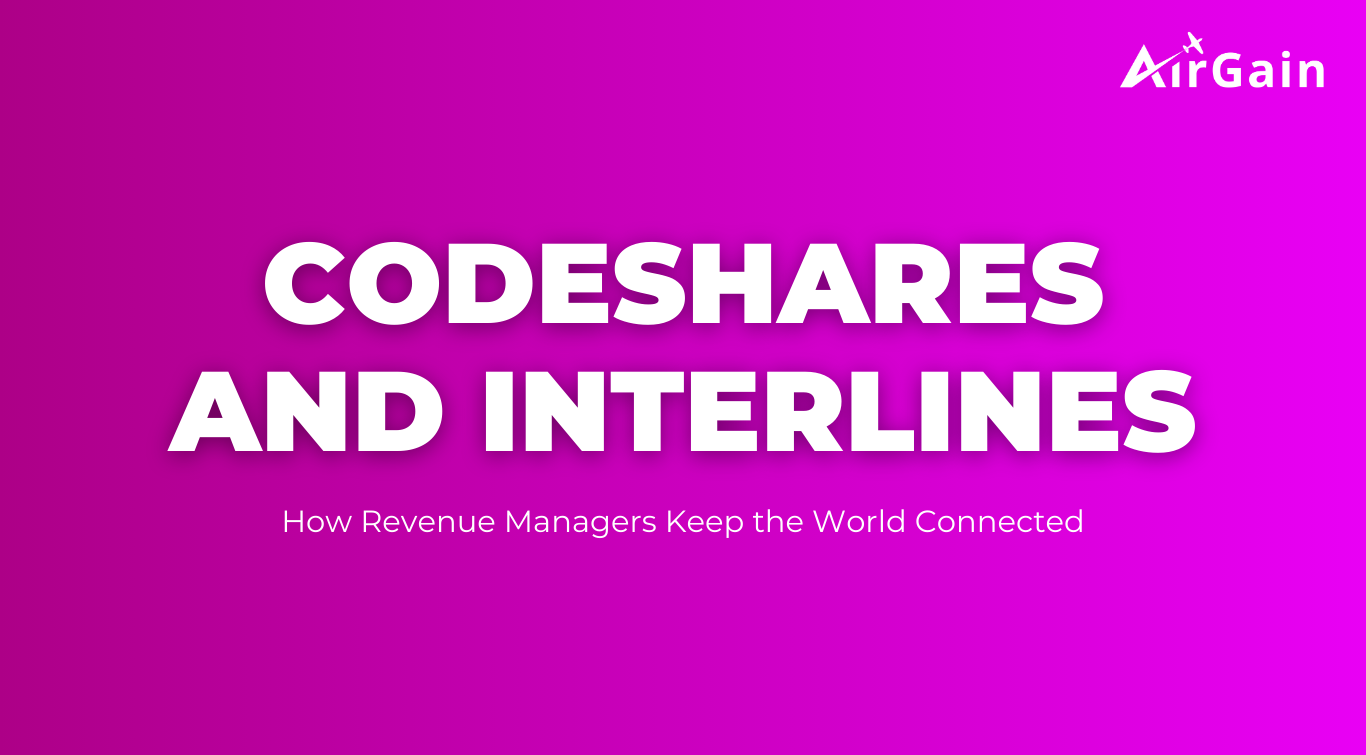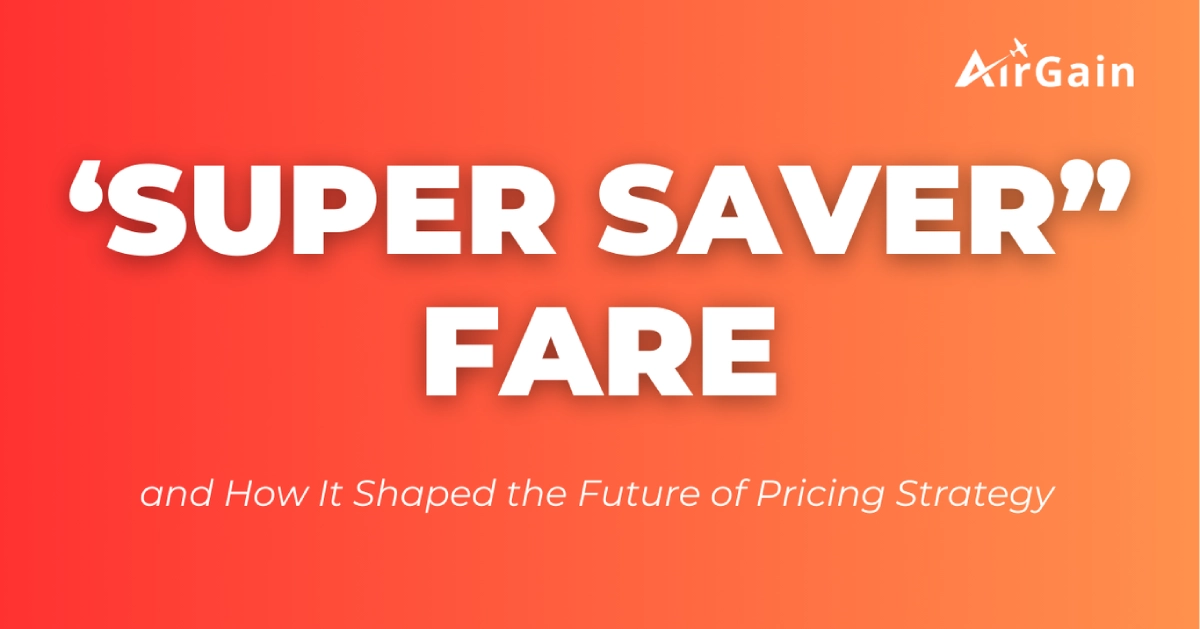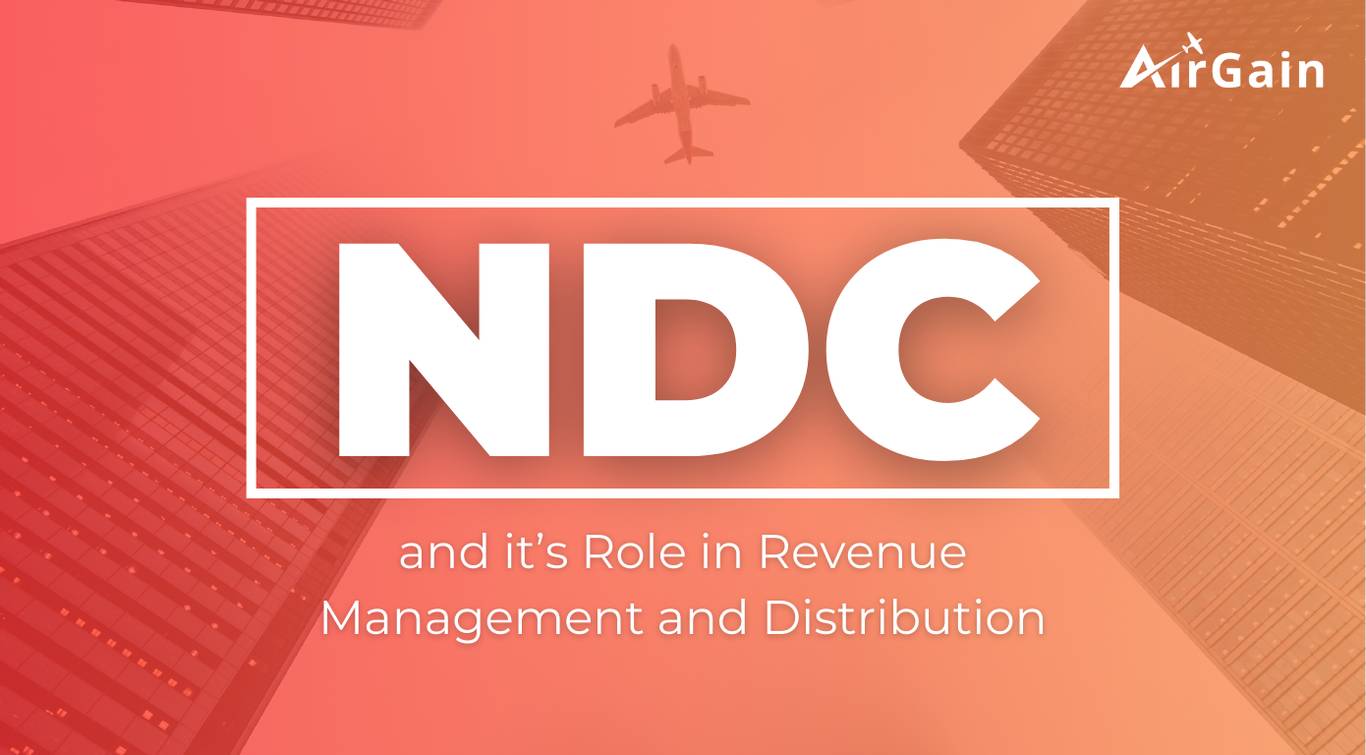11 Jul
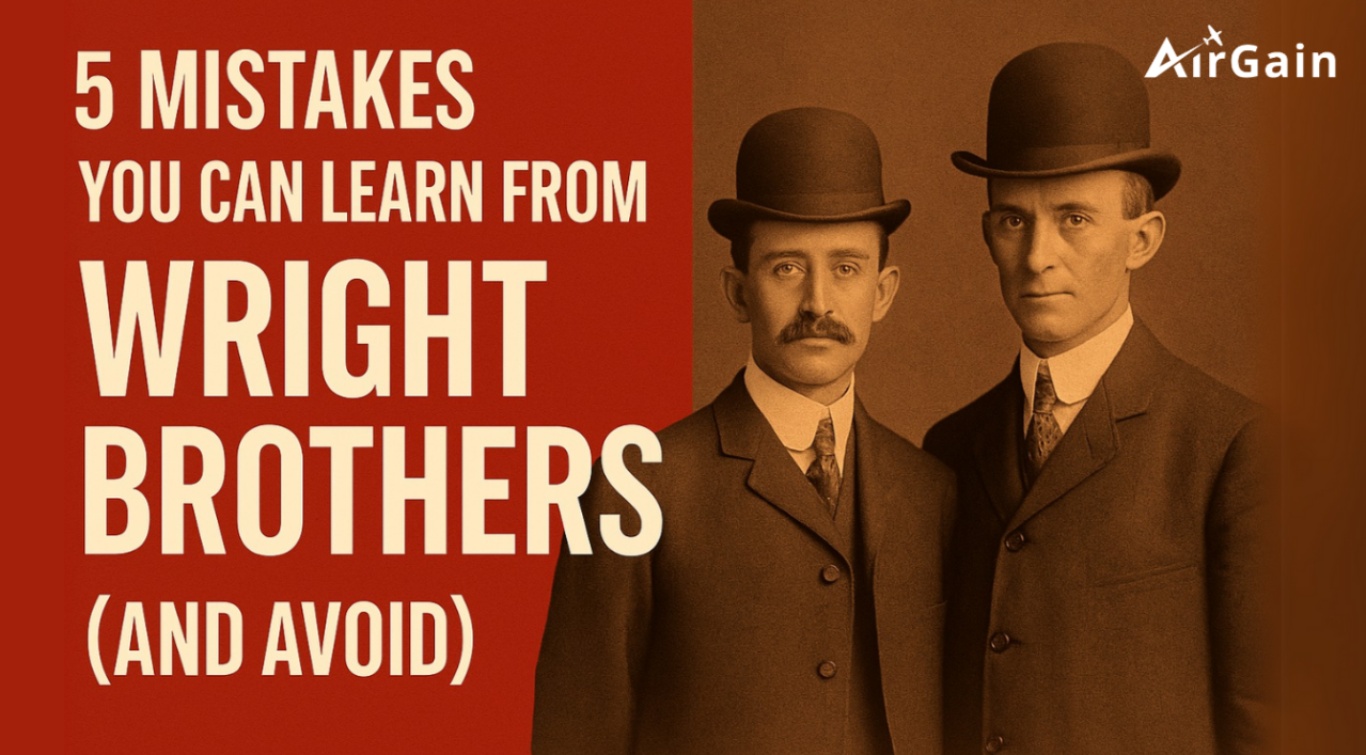
Lessons From the Wright Brothers for Aviation Revenue and Pricing Managers
From Kitty Hawk to the Revenue Cockpit: Wright Brothers Lessons for Airline Pricing Managers
In the early 1900s, two bicycle-makers from Ohio achieved the first powered flight at Kitty Hawk. Over a century later, their spirit of innovation and methodical experimentation still holds valuable lessons for modern airline revenue and pricing strategy. The aviation industry today is radically different in technology, scale, and complexity, yet common mistakes in pricing and revenue management persist. By examining how Wilbur and Orville Wright approached innovation, data, and resilience, we can shed light on five key pricing and revenue mistakes that airline managers still struggle with – and how to avoid them.
The Wright Brothers’ Formula: Innovate, Experiment, Analyze, Persevere
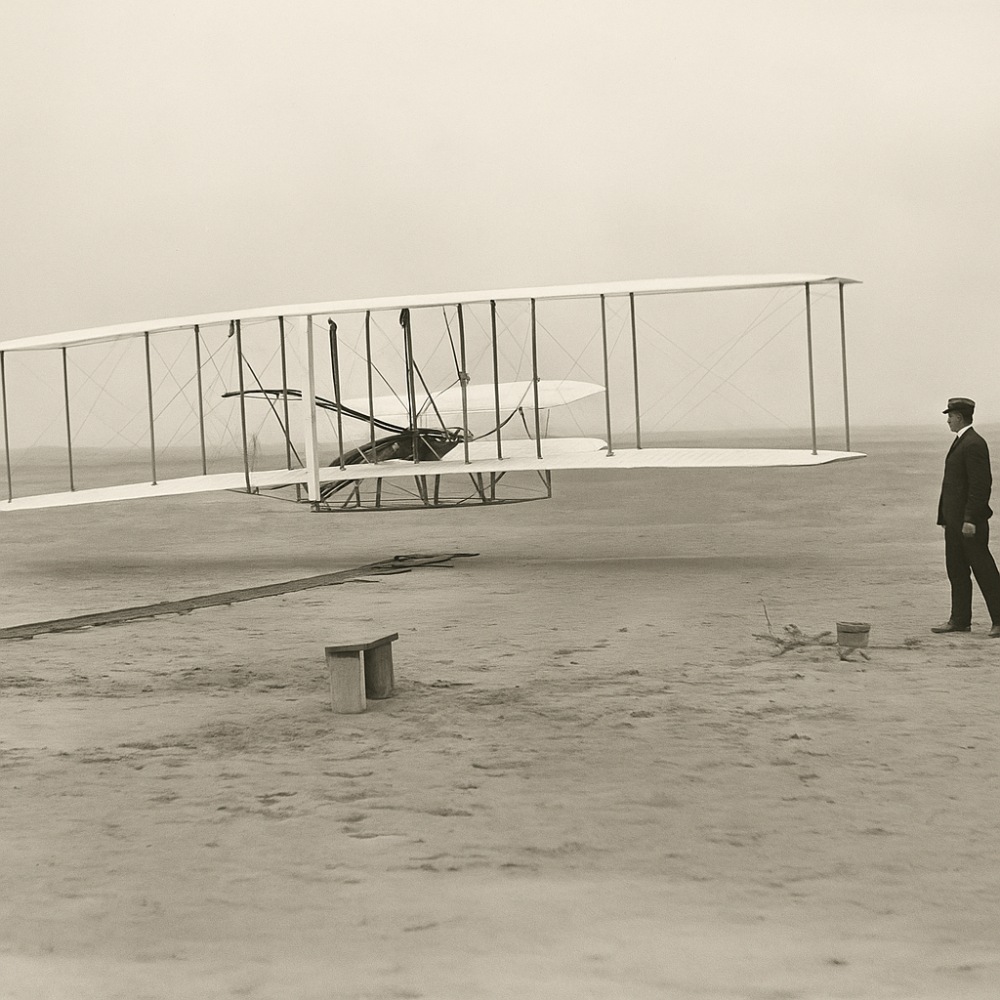
On December 17, 1903, the Wright brothers made history with a 12-second flight over the dunes of Kitty Hawk, North Carolina. This achievement was not a lucky accident – it was the result of years of disciplined innovation and data-driven experimentation. Unlike their contemporaries, who often leapt from rooftops with strap-on wings or built massive prototypes that crashed spectacularly, Wilbur and Orville took a smarter approach. They studied all available research, identified fundamental problems (such as controllability of aircraft), and then tested their ideas incrementally. Starting with kites and gliders, they performed dozens of trials, learning from each mistake without risking everything on a single grand gamble. When their 1901 glider underperformed, they didn’t give up – instead, they built a small wind tunnel in their bicycle shop to gather better data on wing designs. In that homemade wind tunnel (a simple wooden box with a fan), the brothers tested over 200 wing shapes in just two months, carefully measuring lift and uncovering flaws in prior assumptions. Wilbur Wright later noted that “it is doubtful if anyone would have ever developed a flyable wing without first developing this data.” In short, the Wrights combined innovation, experimentation, data analysis, and resilience in the face of setbacks – a formula as relevant to airline business strategy as it was to aeronautical invention.
Fast-forward to today’s aviation sector: revenue and pricing managers face intense competitive pressures, razor-thin margins, and volatile demand. Modern airlines may use supercomputers instead of wind tunnels, but the principles remain the same. Below, we explore five common mistakes in airline pricing and revenue management that echo the opposite of the Wright brothers’ approach. For each mistake, we’ll see how applying the “Wright way” – innovation, rigorous testing, data-driven decision-making, and perseverance – can help airlines soar above the competition.
Mistake 1: Clinging to Old Models Instead of Innovating
A frequent pitfall in airline pricing is complacency – sticking with legacy pricing models and strategies long after their prime. In an industry born from innovation, it’s ironic how often companies resist change. Failing to innovate in pricing can mean not adopting new technologies (like AI-driven dynamic pricing), not exploring new revenue streams (ancillary services, subscriptions), or simply continuing with “that’s how we’ve always done it” fare structures. This mistake can be deadly in a competitive market. History offers a clear example: People Express, a famous low-cost carrier of the 1980s, saw early success with rock-bottom fares but faltered when incumbents innovated their pricing. American Airlines responded with a sophisticated yield management system and super-saver fares in 1985, which contributed $1.4 billion in extra revenue over three years and swiftly turned People Express’s profits into steep losses. In the words of People Express’s CEO, “we tipped right over into losing $50 million a month” once an innovative competitor took to the field. The lesson? Refusing to innovate invites more adaptive players to overtake you.
By contrast, the Wright brothers succeeded because they refused to accept the status quo. While others copied known ideas or hoped inspiration would strike, the Wrights actively pioneered new solutions – for example, inventing wing-warping for roll control when no one else recognized the need for three-axis control. They even designed a lightweight engine when suitable ones didn’t exist. Airline pricing teams should embrace that same inventive mindset. Today, leading airlines are pushing the boundaries of revenue science: for instance, the Lufthansa Group has invested in AI-based continuous pricing, moving beyond the old fixed fare “buckets” to offer dynamic, real-time ticket prices tailored to each context. Launched in 2019, this continuous pricing strategy is making Lufthansa one of the most sophisticated adopters of AI-powered pricing science. The message is clear – to avoid falling behind, airlines must continuously innovate their pricing approaches. That could mean piloting new pricing models (like subscriptions or “pay-as-you-go” airfare), utilizing machine learning to forecast demand, or rethinking the product mix (bundling, branded fares) to better serve customer needs. In an era where technology evolves rapidly, clinging to old models is like flying a canvas biplane in the jet age. Innovate, or get left on the ground.
Mistake 2: Avoiding Experimentation Due to Fear of Failure
Another common mistake is a culture that fears failure so much that it avoids experimentation. In revenue management, this might manifest as reluctance to test new pricing strategies, discount schemes, or distribution channels because “it might not work,” or concern that a failed test could hurt short-term results. Ironically, avoiding small experiments often leads to bigger failures – you end up making large-scale changes blindly or lagging competitors who test-and-learn their way to a better strategy. The Wright brothers offer a perfect counterexample: they ran countless low-risk experiments to validate ideas before any high-stakes trial. As one innovation author noted, “The Wright brothers found relatively simple, low-risk ways to test their assumptions” – flying small kites and gliders rather than immediately building a full-size airplane. These tests were cheap and safe, so a crash was a learning event, not a catastrophe. Even their wind tunnel was a form of rapid experimentation; it allowed them to iterate designs dozens of times quickly without the expense of full aircraft builds.
Airlines can emulate this by fostering a “lab culture” in pricing. For example, rather than rolling out a new pricing algorithm or ancillary fee structure systemwide and crossing fingers, a revenue manager can run A/B tests on a few routes or a subset of customers. Modern e-commerce platforms and booking engines increasingly support such experiments. Some forward-thinking airlines have embraced this: VivaAerobus (a low-cost carrier) reported running about 35–40 pricing and ancillary experiments a year by 2020, using an AI-driven framework to speed up tests. According to their head of ancillary revenue, only roughly 30% of their A/B tests yield positive results – meaning 70% “fail” to beat the control. Yet those failures are not seen as setbacks; they are simply data points guiding the next iteration. This echoes the Wrights’ mindset: each glider that didn’t fly as expected was not an excuse to quit, but an insight into what to try next. In pricing, a controlled experiment that underperforms is valuable feedback, not a disaster, if it prevents a costly mistake at scale and leads to a refined approach.
The fear of failure can also lead to analysis paralysis – endlessly theorizing about pricing moves but never testing them in the real market. The Wrights avoided this trap by balancing analysis with action: they did extensive research and calculation, but then immediately tried things out on a small scale (the equivalent of today’s “minimum viable product”). For airline managers, the takeaway is to create safe spaces for experimentation. Set aside a small percentage of inventory or a single market as a sandbox. Try that new weekend pricing promo or tweak to the fare rules for a month in the sandbox and measure the results. By embracing experimentation, you build an organizational habit of learning. In the long run, this systematic learning leads to far greater success – and far fewer big blunders – than playing it safe and doing nothing new.
Mistake 3: Ignoring Data and Analytics in Decision-Making
In the data-rich world of aviation, one might assume that every pricing decision is backed by solid analysis. Yet a surprisingly common mistake is when managers go with gut instinct or traditional practices and neglect the hard data. This can mean not fully utilizing the airline’s vast booking information, market demand indicators, and competitive pricing data – or not updating pricing models with real-time inputs. Decisions made in a data vacuum can misjudge demand, mis-price flights, or overlook revenue opportunities. The Wright brothers’ experience illustrates the power of data to overturn false assumptions. By meticulously measuring lift and drag in their wind tunnel tests, they discovered that most of the accepted aerodynamic formulas of the day were “full of errors.” Had they trusted conventional wisdom over data, the Flyer might never have gotten off the ground. Instead, they built their strategy on empirical evidence. Wilbur Wright’s conclusion was unequivocal: without accurate data, achieving flight was virtually impossible. In modern terms, data was their competitive advantage.
Today’s revenue management systems generate and consume data on a scale the Wrights could only dream of. Airlines that excel in pricing leverage big data and advanced analytics to stay ahead. These systems analyze not only historical booking trends but also forward-looking signals – everything from web search patterns and social media sentiment to weather forecasts – to forecast demand and adjust prices in real time. For instance, if searches for flights to Hawaii surge due to a cold spell on the U.S. mainland, a data-savvy airline can spot the demand uptick and adjust pricing or capacity immediately. A data-ignorant competitor might miss the window and either leave money on the table or get caught short. As one industry analysis explains, robust data feeds and real-time pricing adjustments help airlines optimize revenues by selling the right seats at the right price, balancing load factors and yields dynamically. In other words, data-driven pricing is fundamental to financial success in aviation.
If ignoring data is a mistake, the solution is an organizational commitment to analytics. This means more than installing software – it’s about mindset. Revenue managers should question their assumptions and seek evidence. A few diagnostic questions can help: What do the numbers say?, Do we have data to support this fare change or is it a hunch?, What are we not seeing in the data? Just as the Wrights built a wind tunnel to get the data they needed, airlines may need to invest in better forecasting tools or data science teams to crunch the numbers. It’s also critical to verify the data and models. The brothers double-checked others’ calculations and found flaws; similarly, a pricing team should validate that their demand models or elasticity estimates reflect reality (e.g. periodically back-test forecasts against actuals). In short, the modern airline has a wealth of data at its fingertips – failing to harness it is like flying blind. The Wright way would be to trust the instruments.
Mistake 4: Lack of Resilience – Not Learning from Setbacks
The aviation market is notoriously turbulent. Economic swings, pandemics, geopolitical events, or competitive price wars can all upend the best-laid revenue plans. A common mistake in this environment is a lack of resilience – essentially, not learning from failures or not adapting to rapid changes. Some airlines respond to a setback (like a failed pricing initiative or a demand shock) with either panic or denial: slashing fares across the board in an unstrategic way, or freezing and doing nothing, hoping things “return to normal.” The Wright brothers’ journey underscores how crucial resilience and learning are to success. When their 1901 glider experiments produced disappointing results, they did not see it as an insurmountable failure. Instead, they treated it as a puzzle to be solved. They went back to the drawing board – literally – by constructing the wind tunnel to methodically figure out what went wrong and how to improve the design. The very next year, armed with new data and redesigned wings, their 1902 glider performed brilliantly, setting the stage for the powered flight breakthrough. This bounce-back wasn’t luck; it was resilience in action, converting a setback into knowledge.
In airline revenue management, resilience means continuously monitoring, learning, and adjusting. For example, consider an airline that launches a new fare product (say, a “light” fare with no baggage included) and finds it’s not selling as expected. A non-resilient approach would be to either pull the product without analysis or stubbornly keep it unchanged hoping sales pick up. A resilient approach – the Wright approach – would dig into data and feedback: Are customers confused by the product? Is the price differential wrong? Is a competitor undercutting it? Then experiment with adjustments (better communication of benefits, slight price tweaks, etc.) and try again. Many airlines demonstrated resilience during the COVID-19 demand shock: when passenger revenue evaporated, carriers quickly pivoted, for instance by deploying idle passenger aircraft for cargo-only flights or by introducing flexible booking policies to restore traveler confidence. Those willing to adapt rapidly and learn from each tactic’s outcome fared better in riding out the storm. In late 2022 and 2023, airlines that dynamically managed capacity and pricing as travel demand rebounded were able to command higher fares – U.S. ticket prices in May 2023 were over 30% higher than in January 2022 amid surging demand – yet also had to moderate prices later as market conditions normalized. The key was continual adjustment: raising prices when possible but also responding when competitors added back capacity or when pent-up demand cooled.
Resilience also involves not overreacting emotionally. One Forbes analysis noted that a classic airline management mistake is to “trust emotion over data” – for instance, making a drastic pricing move out of panic or ego rather than evidence-based reasoning. The Wrights, despite their passion, remained remarkably level-headed in their pursuit. Modern pricing teams should take the same approach: when a setback occurs (be it a revenue miss or a competitor’s aggressive pricing), resist knee-jerk responses. Instead, assess the situation analytically, consider small corrective experiments (as noted earlier), and maintain a long-term vision. Remember that even the greatest achievements in aviation came through an iterative process. A pricing strategy that fails initially isn’t a permanent failure until you stop learning from it. By instilling a culture that treats setbacks as learning opportunities, revenue managers can ensure their strategies improve over time. In practical terms: hold post-mortems on any major pricing initiative that underperforms, encourage analysts to surface insights (e.g. “Flight demand didn’t materialize at that price point because we overlooked X factor”), and document these lessons for future strategy. Continuous improvement is the name of the game – much as the Wright flyer of 1905 was vastly superior to the 1903 version because the brothers kept refining their design after each flight.
Mistake 5: Operating in a Silo and Ignoring Market Context
The final mistake is a big-picture one: making pricing and revenue decisions in isolation, without considering the broader market and cross-functional context. Revenue management cannot succeed as a siloed function. Yet it’s not uncommon to see pricing managers focus narrowly on their yield algorithms or internal targets and lose sight of external signals – competitor actions, customer perceptions, or coordination with sales and marketing. Ignoring the market context can lead to missteps like pricing above what the competition offers for the same value, or running a promotional fare sale just as your target customers are being courted by a rival loyalty campaign. A hotel revenue management study puts it succinctly: “It can be hard for companies to stay profitable if they set prices without understanding competition [or] knowing market conditions.” The same holds true for airlines. If a carrier prices a new route based purely on its cost and desired margin, without examining the fares of incumbent airlines or the price-sensitivity of local travelers, it may launch with fares too high, resulting in empty seats – or too low, leaving money on the table and triggering an unnecessary price war.
The Wright brothers inherently understood context. They actively sought knowledge from others and monitored the “competitive landscape” of their time – reading about gliding experiments in Germany, corresponding with experts like engineer Octave Chanute, and even choosing Kitty Hawk partly due to its steady winds as reported by the Weather Bureau. They were not building their airplane in a vacuum; they gathered information about the environment and previous attempts so they could make better decisions. For airline pricing, this translates to market research and cross-department collaboration. Before implementing a pricing strategy, a resilient revenue manager will confer with marketing (to gauge customer sentiment and upcoming promotions), with network planning (to understand capacity changes or new route launches), and with sales/account managers (to anticipate corporate client reactions). They will also continually scan industry news – is a low-cost carrier entering one of our key markets next quarter? Are macroeconomic indicators pointing to a demand dip in certain regions? These factors should influence pricing tactics. For example, if a new competitor is known for rock-bottom fares on leisure routes, your strategy to defend market share might involve creating a Basic Economy product or focusing on your differentiators for premium segments, rather than blindly matching prices across the board.
Another aspect of context is customer behavior and perception. Airlines sometimes make the mistake of assuming customers will respond a certain way without evidence. (As one airline exec quipped, “We listened to what customers said but not what they did.”) The Wrights, on the other hand, studied how real airflows and forces behaved, not just theory. In pricing, it’s crucial to pay attention to what customers actually do: what booking patterns reveal, how they react to fare rules or fees, and what they value. A classic example is fare restrictions – an airline might think a strict no-refund policy on a cheap fare will deter only a few, until data shows a significant segment won’t buy due to inflexibility. The holistic approach might be to adjust pricing in tandem with policy changes (e.g. slightly higher fare but with flexibility) to maximize both revenue and customer satisfaction. In short, context matters. Avoid the mistake of working in a bubble. The best revenue strategies integrate competitive intelligence, customer insights, and alignment with the airline’s overall commercial strategy.
Coordination is also part of this lesson. A pricing change can’t achieve maximum success if, say, the sales team isn’t aware and continues contracting corporate rates that undercut the new strategy, or if marketing is advertising messages inconsistent with the pricing approach. Just as the Wright brothers combined mechanics, aerodynamics, and pilot skill into one system, an airline must synchronize its pricing with distribution, marketing, loyalty programs, and customer service policies. The payoff is not only avoiding costly mistakes but also capturing opportunities – for example, a well-coordinated cross-sale strategy might adjust seat pricing in conjunction with dynamic ancillary pricing (bags, upgrades) to maximize total revenue per passenger. Indeed, airlines are starting to adopt total offer optimization: using AI to price not just the seat but the entire bundle of travel products for each customer in real time. Achieving this requires breaking down silos between the “base fare” team and the ancillary teams, between revenue management and e-commerce. The Wright model of collaboration and information-sharing is the way forward in an increasingly complex airline marketplace.
Conclusion: Flying Higher with Wright-Inspired Strategy
Aviation has always been a frontier of human ingenuity, from the Wright brothers’ flyer to today’s sophisticated global networks. As we’ve seen, the same principles that powered the first flight – innovation, relentless experimentation, data-driven design, resilience, and holistic thinking – are key to navigating the challenges of airline revenue management. By examining five common mistakes through the lens of those principles, we can chart a path to stronger strategies:
- Innovate boldly: Don’t let outdated pricing models or fear of change ground your potential. Continuously seek new ideas and tools, whether it’s AI pricing engines or creative fare products, to stay ahead. The alternative is falling prey to more innovative competitors.
- Experiment often and cheaply: Create a culture where test-and-learn is the norm. Small-scale experiments (A/B tests, pilot programs) provide invaluable feedback with minimal risk, much like the Wrights’ wind tunnel trials. An idea that fails in testing is a lesson learned, not a disaster.
- Trust the data: Intuition and experience are valuable, but they must be checked against real analytics. Use the wealth of data at your disposal – from historical booking curves to real-time search trends – to make informed decisions and update them as conditions change. As Wilbur Wright might say, get the data “developed” first, or the strategy won’t fly.
- Be resilient and adaptive: Every plan will face headwinds. What sets successful revenue managers apart is the ability to learn from setbacks and pivot gracefully. Instead of reacting out of panic, respond with analysis and incremental adjustments. Over time, this continuous improvement approach will guide you through industry volatility, just as persistence guided the Wrights from glider crashes to sustained flight.
- Keep the whole picture in view: Finally, tear down silos and factor in the full context – competitor moves, market trends, and alignment with broader company goals. A pricing strategy doesn’t exist in isolation; it’s part of an ecosystem. Those who integrate their tactics across departments and tune into external signals will avoid costly missteps and seize opportunities faster.
By internalizing these lessons, aviation revenue and pricing professionals can turn the Wright brothers’ legacy into a modern competitive edge. The pioneers at Kitty Hawk proved that achieving the “impossible” required not just one big idea, but a disciplined process of learning and improvement. In the same way, optimizing airline revenue is an ongoing journey of discovery. With a bit of Wright-inspired wisdom, today’s pricing managers can ensure their strategies stay aloft – and truly take off.

